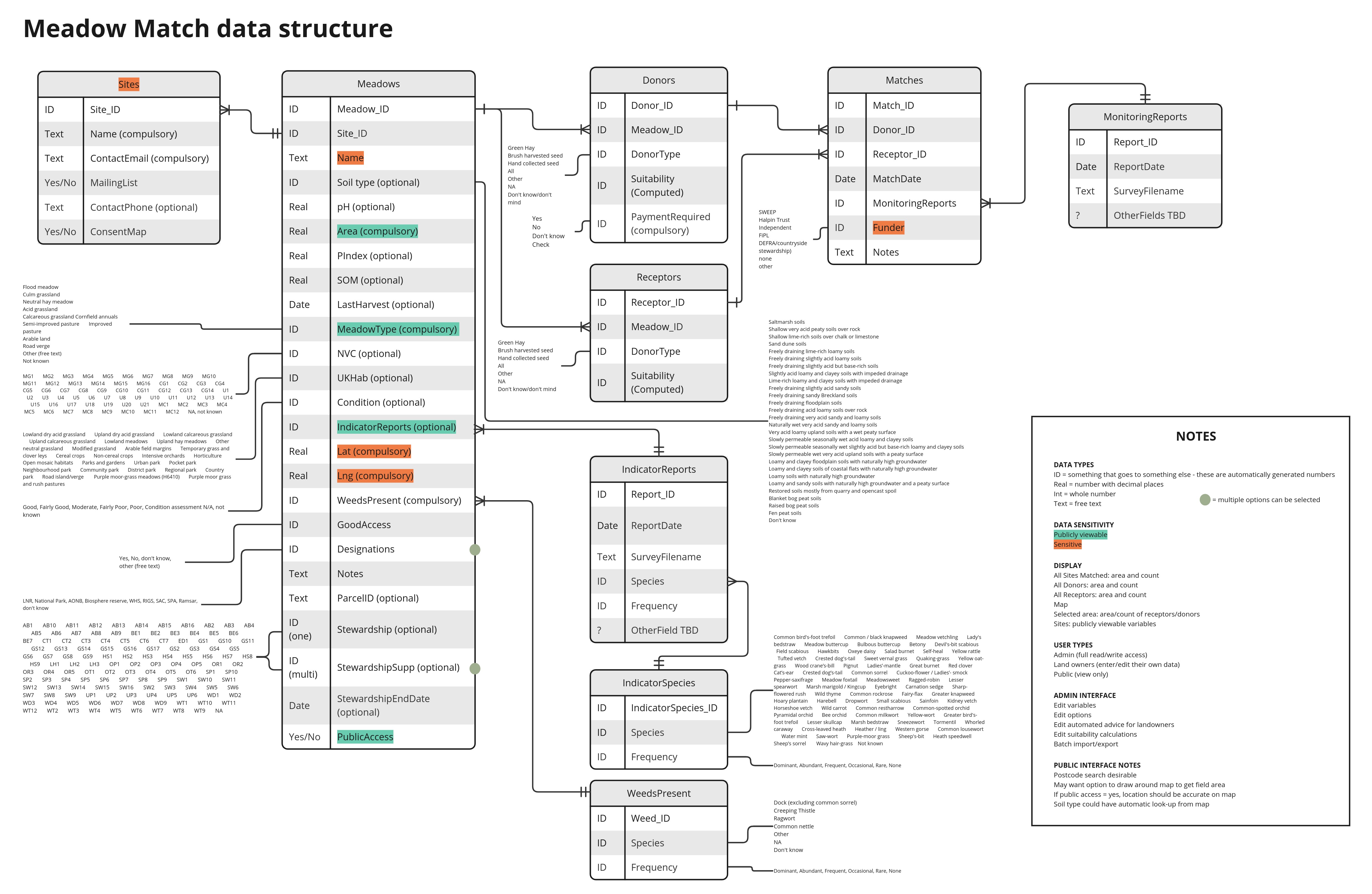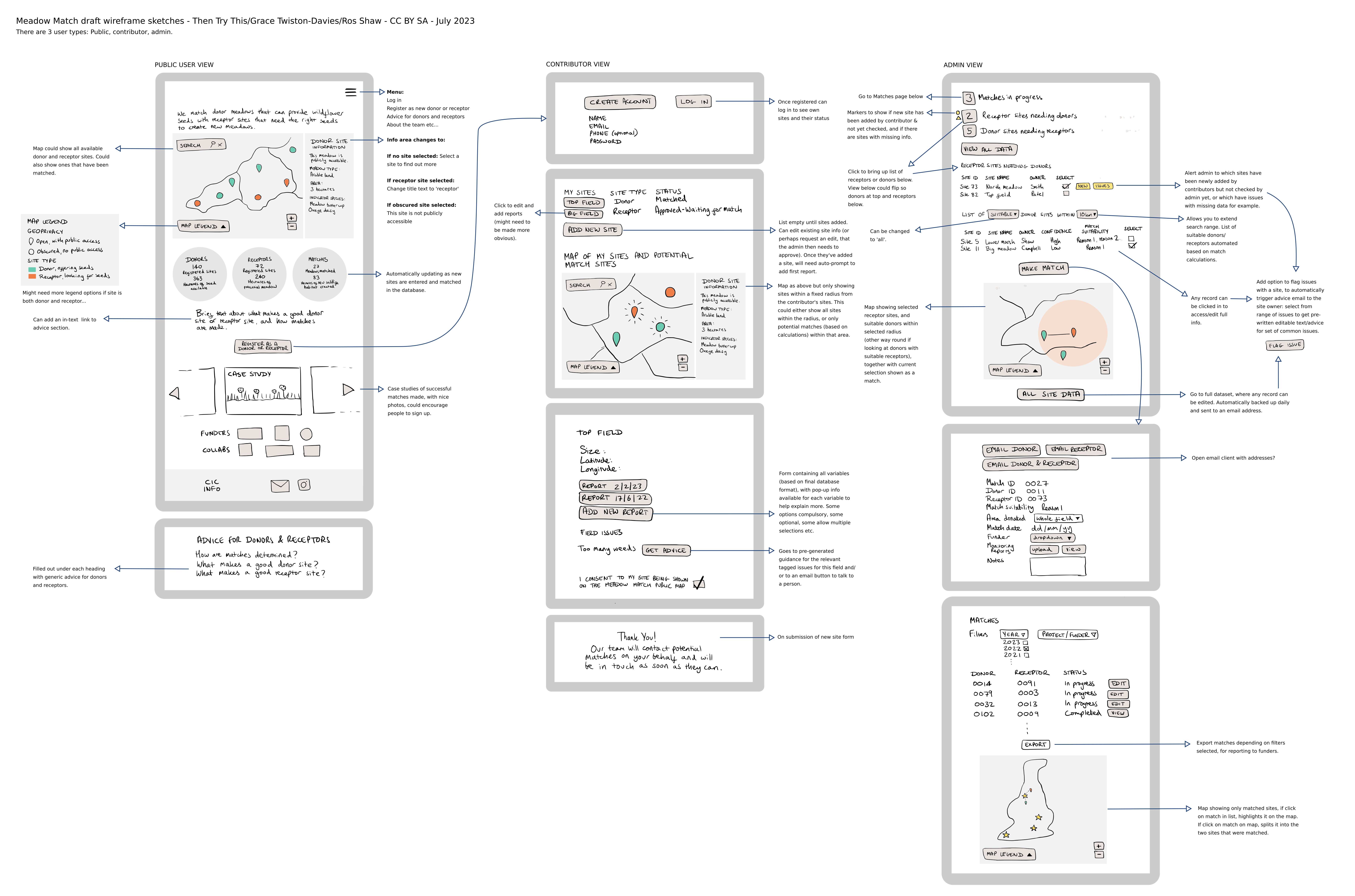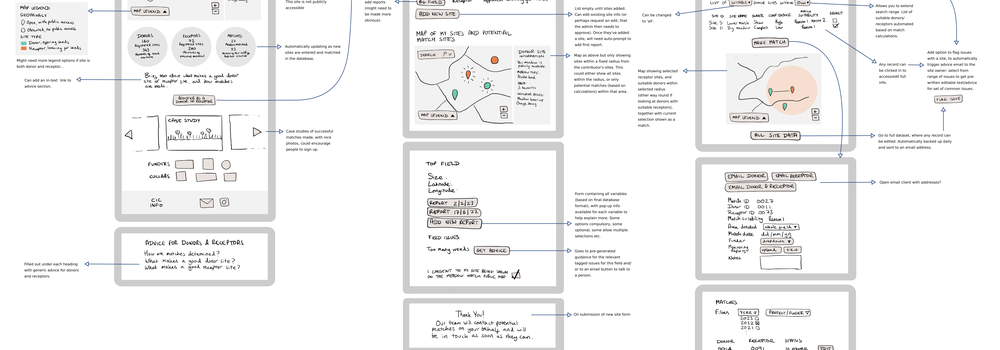A few months back we were asked to help out with Meadow Match, which is a project to match up land owners with wild flower meadows that seed can be harvested from, with potential recipient sites where more meadows could be created. We’ve lost 97% of our wildflower meadows in living memory and those that remain are important sites for biodiversity and carbon storage so it's vital that we find those existing sites and help to create more.
The Meadow Match project is run by the Wildflower Collective CIC, alongside lots of collaborators, and their aims are to store more carbon in the soil and improve biodiversity while also improving landscape character and productivity for farmers. While matching up donor and recipient sites sounds fairly straightforward, there are a large number of variables that need to align, including things to do with the soil type, species present, location, and how the land is managed. At the moment this is all being done manually within a standard spreadsheet, despite the volume of data and the algorithm for matching being complex. While this is working OK so far, it’s time consuming and also reliant on one person with the required knowledge, so it’s quite vulnerable and also not easy to scale.
We spent a bit of time working with Dr. Grace Twiston-Davies and Dr. Rosalind Shaw to build an ‘entity relationship diagram’, which is basically a schematic of all the variables and all the options within those variables, together with how they relate to each other. This forms the basis for building a database to more robustly store, update and access the data. By using a more sophisticated database, human error can be reduced as we can build in basic data quality checks and there is no risk of version control problems (e.g. where an update is made to a spreadsheet file, but then an older version is mistakenly used next time).

Based on this detailed map of the data, we also sketched wireframes for how a front-end system could look. This is the first step in any software project we do, where we make sure that all the elements needed are included, and that it will work how it needs to work for all the different users. In this case it needs to have a public view, a donor/recipient sign-up and portal, and an administrator view for the matching process. It’s quite a complicated and fun stage of this type of project, because we’re trying to get all the functionality into the simplest and nicest form we can. We tend to go through a couple of iterations with the users at this stage to make sure it’s in good shape before moving on to making fully styled wireframes (where it’s all laid out properly and looks how the final thing will look), and then once those are checked and sign off, only then do we start building anything.

So, the sketched wireframes are finished, and we’re now looking for funding with the Wildflower Collective so that we can build the thing. If you hear of anything that might be suitable, definitely let us know so we can help make more meadows...

